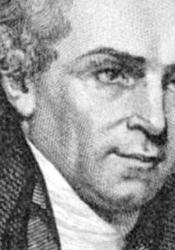Christian Missionaries to India
Throughout Jane Eyre, the references to Christianity/religion are prevalent. In Chapter 34, St. John implores Jane to go with him to the mission field “as a conductress of Indian schools, and a helper amongst Indian women” (Bronte 360). John’s calling to missionary work shows his willingness to be helpful to others. Jane’s humility is apparent as well, as she offers to accompany John to India. John, however, is concerned with appearances only, which causes a rift between the two. Similar to Jane’s and John’s willingness to help others, early missionaries were concerned with more than spreading Christianity.
In Europe, the spread of Christianity was important and highly regarded as the calling of many. What many people might not know, however, is that trading companies were hesitant to allow missionaries into their trading posts. They regarded missionary work as “destabliz[ing to] culture and threaten[ing to] trade” (Daughrity and Athyal 34). Therefore, it wasn’t until 1706 that the first Protestants traveled to India. In contrast to the beliefs of trading companies, missionaries sought to “enrich humanity with God’s loveliest and best” (Hedlund 45). Their goal was to be humble and helpful members of Indian society. Many missionaries learned the native language and tried to assimilate themselves into Indian culture. The Bible was translated into multiple languages in an effort to help make Christian doctrine more accessible to the people. In the time period of Jane Eyre, John would have heard of William Carey--one of the fathers of the Christian missionary field in India--and his motto, “to educate, to inspire, and to serve” (Daughrity and Athyal 39). John would have been inspired by this motto to become a missionary himself.
The first college built in India was Serampore College, which eventually became the center of religious studies. The goal of the missionaries which built the school was to create “cross cultural understanding and empowering the local context with education” (Daughrity and Athyal 39). Had Jane been allowed to accompany St. John to India, the story might have included details of her efforts to educate the people of India--specifically, women and young girls. According to the Encyclopædia Britannica, “by the 1860s, education for women had advanced and nurses’ training had begun; the vast majority of Indian nurses also have been Christian.” But, the choice to have Jane agree to marry John, travel to India, and begin missionary work would have been a stagnant one. The story would not have progressed, and Jane would not have sought after Mr. Rochester.
Works Cited
Bronte, Charlotte. Jane Eyre. W.W. Norton and Company, 2016.
Carey, William. image. Britannica Academic, Encyclopædia Britannica, 13 Nov. 2021. academic-eb-com.eu1.proxy.openathens.net/levels/collegiate/assembly/view/168680. Accessed 23 Jan. 2022.
"Christianity." Britannica Academic, Encyclopædia Britannica, 10 Sep. 2020. academic-eb-com.eu1.proxy.openathens.net/levels/collegiate/article/Christianity/105945#260807.toc. Accessed 23 Jan. 2022.
Daughrity, Dyron B., and Jesudas M. Athyal. Understanding World Christianity: India. National Book Network, 2016, https://doi.org/10.2307/j.ctt1b3t6wd.
Hedlund, Roger E. Christianity Made in India: From Apostle Thomas to Mother Teresa. Fortress Press, 2017.
"William Carey." Britannica Academic, Encyclopædia Britannica, 22 May. 2012. academic-eb-com.eu1.proxy.openathens.net/levels/collegiate/article/William-Carey/20318. Accessed 23 Jan. 2022.

